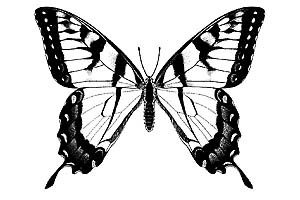|
I'm sure many of you are familiar with the order Lepidoptera that includes butterflies, moths, and skippers. Butterflies have clubbed antennae, moths are usually described as having feathery antennae, and skippers have clubbed antennae with a tiny hook at the tip. By examining antennae of adults in this order, we can differentiate these three common groups.
The Lepidoptera go through holometabolous or complete metamorphosis. Most of them have two pairs of wings as adults, although there are certain members whose females are wingless, such as some species in the family Geometridae. The larval stages or caterpillars in this family are sometimes called inchworms or loopers. Adults are described as having siphoning mouthparts. Their mouthparts are distinctive and referred to as a proboscis that is long and coiled.
The larval stage of many species in this order feed on turfgrass as well as the foliage of woody ornamental plants. Individuals such as armyworms, cutworms, and species called sod webworms may be economically important to turfgrass managers.
Worldwide there are about 112,000 different species of butterflies, moths, and skippers. In North America north of Mexico there are about 11,300 different species that have been identified.
|

Butterfly
Order: Lepidoptera
Family: Papilionidae
|
